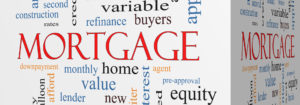 Should I choose a fixed rate or variable rate mortgage? It’s an age-old dilemma homeowners have been struggling with for decades. An often-cited study by York University professor Moshe Milevsky found that homeowners would come out ahead 9 times out of 10 by going variable instead of fixed. So, case closed. Variable rate it is, right? Wrong.
Should I choose a fixed rate or variable rate mortgage? It’s an age-old dilemma homeowners have been struggling with for decades. An often-cited study by York University professor Moshe Milevsky found that homeowners would come out ahead 9 times out of 10 by going variable instead of fixed. So, case closed. Variable rate it is, right? Wrong.
You’d think that most Canadians would choose variable over fixed rate, but that simply isn’t the case. Despite the findings in Milevsky’s study, the majority of homeowners are still choosing fixed over variable rate. 68% of mortgage holders have fixed rate mortgages, 28% have variable-rate or adjustable-rate mortgages, and 4% have “combination” mortgages, according to Mortgage Professionals Canada. And the most popular mortgage term by far, especially with first-time homebuyers, is the 5-year fixed rate.
That begs the question, why are Canadians choosing fixed over variable rate? Mostly for safety and security. With a fixed rate mortgage, your mortgage rate and payment stay the same during the mortgage term. However, this comes at a cost – fixed rate mortgages almost always come with higher mortgage rates than variable rate mortgages.
So, has it been worth it to choose fixed instead of variable rate? Not really. It would have made sense if mortgage rates were a lot higher these days compared to 5 years ago, but that simply isn’t the case. Although fixed mortgage rates have started to inch up in recent months, they remain low by historic standards.
It’s much the same story with variable rate mortgages. Unlike fixed rate mortgages, which are influenced by Government of Canada bond yields, variable rate mortgages are impacted by monetary policy set by the Bank of Canada. Lenders almost always move their prime rate in lockstep with our central bank’s overnight lending rate. It’s a lender’s prime rate that impacts the rate on variable mortgages.
Economists have been predicting higher interest rates for years to no avail. The Bank of Canada finally raised interest rates for the first time in 7 years in July 2017. Our central bank has raised interest rates once more earlier this year in January, but interest rates have remained the same since then.
A couple interesting things have recently happened.
Variable Rate Mortgage War
An annual springtime tradition that plays out between the big banks is the mortgage rate wars. Usually, it happens with fixed rate mortgages. Bank of Montreal (BMO) typically fires the first shot by cutting the rate on its 5-year fixed mortgages. But with 5-year Government of Canada bond yields at their highest level in 7 years, this time it’s happening with variable rate mortgages.
BMO once again fired the first shot, cutting its 5-year variable rate mortgage to 2.45 percent. That’s a 1 percent discount off BMO’s prime rate. That’s pretty significant since it’s the biggest widely advertised discount ever by the big banks. TD Bank and HSBC have since followed suit, matching , and in HSBC’s case, beating BMO’s discount.
Why are the big banks so desperate for your business? It might have something to do with the latest home sale numbers. With national home sales falling to their lowest level in more than five years in April, the big banks are likely trying to spark some newfound interest in the real estate market.
NAFTA Negotiations
Another major development is that NAFTA renegotiations have stalled. All sides remain far apart on some key issues. With the Trump administration missing an informal deadline, it looks like NAFTA negotiations could spill into 2019.
Economists had been predicting one or two more interest rate hikes by the Bank of Canada by the end of this year, but with NAFTA negotiations up in the air, it’s looking less and less likely with each passing day. Although Poloz is a bit of a loose cannon, raising interest rates without knowing the fate of NAFTA would be pretty risky. If Canada were to end up significantly worse off once the NAFTA negotiations conclude, Poloz may be forced to do an about-face and cut interest rates.
I’m not a betting man, but if NAFTA negotiations remain up in the air until 2019, I’d be willing to wager that Poloz leaves interest rates where they are for the remainder of 2018. With variable mortgages rates where they are, with no signs of going higher anytime soon, there’s a serious case to be made for choosing variable over fixed.
If you’re not already convinced, this might change your mind. The current spread between the 5-year variable and 5-year fixed rate is now around 1%, the widest it’s been since 2011. It would take 4 Bank of Canada rate increases to bring variable mortgage rates on par with fixed mortgage rates and 8 or 9 rate increases over 5 years to break even. Although it’s tough to tell what the future holds, the odds are clearly strongly in favour of variable rate mortgages, even for us risk-adverse Canadians. (Variable rate mortgages also tend to come with less costly mortgage penalties, yet another good reason to go variable.)
Fixed or Variable?
In the end, the decision to go fixed versus variable is a personal one. But unless the thought of higher interest rates keeps you up at night, you’d be hard-pressed to find a good reason to choose fixed over variable rate right now.
Sean Cooper is the bestselling author of the book, Burn Your Mortgage: The Simple, Powerful Path to Financial Freedom for Canadians, available now on Amazon and at Chapters, Indigo and major bookstores, and as an Audiobook on Amazon, Audible and iTunes.